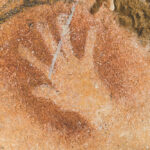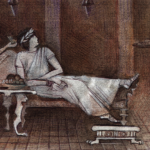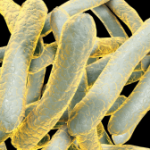Celebrating its long history, the Division of Rheumatology & Immunology at Medical University of South Carolina has made strides in scleroderma, lupus and more.


Celebrating its long history, the Division of Rheumatology & Immunology at Medical University of South Carolina has made strides in scleroderma, lupus and more.

David R. Mandel, MD, FACR |
I have been reading Yuval Harari’s thought-provoking and engaging book, Sapiens: A Brief History of Humankind, about our species’ struggles and the path that led to our emergence as the predominant species. I was captivated by the drawing of the hand of one of our ancestors and mused about what that forebear was thinking as…

Charles Radis, DO |
On a highway traversed by cement trucks and Beetle-Bug auto-rickshaws we travel north from Bangalore, India, for a house call. It is 2007, and the city leaves us grudgingly. Between fields of loose chocolate soil and sprigs of beans poking skyward, the skeletons of homes and businesses rise; armies of workers lay brick from wooden…

Baljeet Rai, MD, Abhimanyu Amarnani, MD, PhD, Ja-Yoon Uni Choe, MD, Nicole K. Zagelbaum Ward, DO, MPH, & Richard S. Panush, MD, MACP, MACR |
The study of rheumatology (and medicine) in art, history, literature and music is engaging and informative.1-12 In this article, we present some instances when rheumatic and autoimmune diseases in certain individuals may have affected the course of history in Western civilization. Physicians are usually concerned, appropriately, with the effects of illness on the lives of…

Xiaofeng Zeng, MD, & Qingping Yao, MD, PhD |
Rheumatology in China is a relatively young discipline, but it has developed exponentially over the past three decades. In this article, we review the history of rheumatology in China and advances in clinical care, research and education in this field. The Founding Father Naizheng Zhang, MD, is widely regarded as the father of rheumatology in…

The disease called systemic lupus erythematosus (SLE) went through many different stages of classification before reaching the modern criteria reflecting our current understanding of its pathogenesis. In 1872, the Viennese dermatologist Moriz Kaposi, MD, published a paper, “New Contributions to Knowledge of Lupus Erythematosus,” which provided a significant leap forward in the characterization of this…

In 1866, Adolf Kussmaul, an internist, and Rudolf Maier, a pathologist, published the classic characterization of what eventually became known as polyarteritis nodosa.1 It was the first scientific clinical characterization of a noninfectious vasculitis. As such, it became a paradigmatic point of contrast to other types of vasculitides that were later described. Their description also…

Mysterious Ways The juxtaposition of the old and the new was readily evident that busy Wednesday morning. My first patient, a 94-year-old gentleman, Hal, arrived with a precise request. His rheumatologist for the past 40 years had just retired, and he was searching for a doctor with expertise in the use of gold sodium aurothioglucose,…

Pathologists are legendary for blending their work product with the culinary arts. Through the years, their use of delectable foods as descriptors has created a clever way to indelibly link in the minds of clinicians the histopathologic observations of disease with an assortment of these tasty foods: There is the depiction of an apple green…

Yukiko Kimura, MD, & Laura E. Schanberg, MD |
Pediatric rheumatology was formally recognized as a specialty in 1991 by the American Board of Pediatrics. Prior to this time, children with rheumatic diseases were treated by a hodgepodge of providers. In addition to providers who had training as pediatric rheumatologists, general pediatricians, adult rheumatologists, allergist-immunologists, orthopedists, pediatric infectious disease specialists and others treated children…